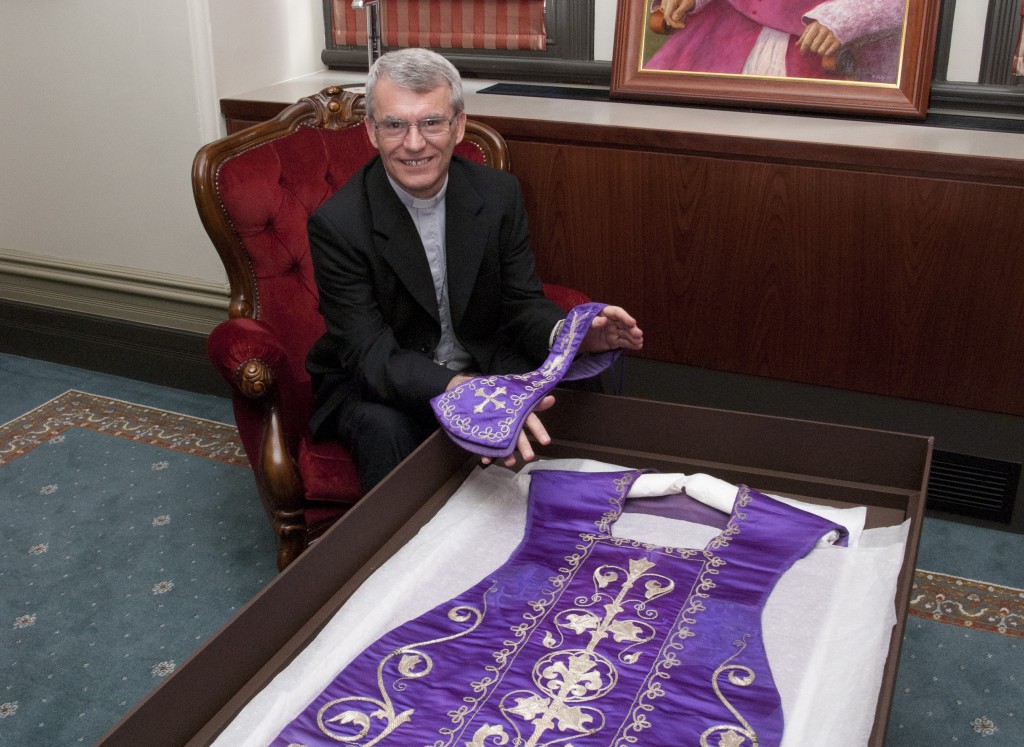
It will likely remain a mystery whether the skilled tailors and embroiderers responsible for a set of vestments brought out of archdiocesan archives last week could have ever imagined they would end up at what was then the very end of the earth.
Made at the Royal Workshop in Spain in the 1830s, the opulent set of purple vestments are thought to have been used by the one-time coadjutor bishop of Perth Jose Maria Serra OSB (1852-1862) or his Spanish-compatriot Bishop Rosendo Salvado, the founder of the New Norcia Benedictine monastery.
The set, made largely from Indian silk, includes chasuble, stole, chalice veil, maniples and burse.
The set’s chasuble and one of its maniples were conveyed to Cathedral House last Thursday at the instigation of Perth historian Odhran O’Brien.
Bishop Serra’s ecclesial successor Archbishop Timothy Costelloe SDB and a small number of archdiocesan staff had a firsthand look at the archival treasure.
Archbishop Costelloe said the vestments “remind us of how much we owe to those who have gone before us”.
The archdiocese’s then-archivist Sr Francis Stibi PBVM arranged for the set to be painstakingly conserved by Maria Zappavigna over a two-year period from June 2002 to June 2004, consuming some 200 hours of work.
Mrs Rusty Walkley, an authority on embroidery who has done work for Hampton Court Palace in England, was the advisor for the project.
Bishop Serra was appointed coadjutor bishop and eventually apostolic administrator of Perth by the Holy See after long-running friction with Perth’s first Bishop John Brady, who eventually left the diocese.
Mr O’Brien told The Record his research had revealed Bishop Serra to be a man fond of pomp and ceremony.
The vestments were thought to have been the subject of a dispute between Bishop Serra and his administrative successor, the second bishop of Perth Martin Griver, with Serra claiming to have paid for the vestments personally.
With Bishop Serra unable to produce proof of purchase, it was eventually decided that the vestments should remain in Perth.
After Bishop Serra’s departure, Bishop Griver decided to sell luxury items acquired by Bishop Serra, including a carriage and jewellery, raising 1500 pounds for the first iteration of St Mary’s Cathedral.
Mr O’Brien’s forthcoming book on Bishop Griver, the fruit of six years of scholarship, will be published by St Pauls Publications early next year.
Mr O’Brien thanked archdiocesan archivist Stefania Di Maria for facilitating the viewing of the vestments.